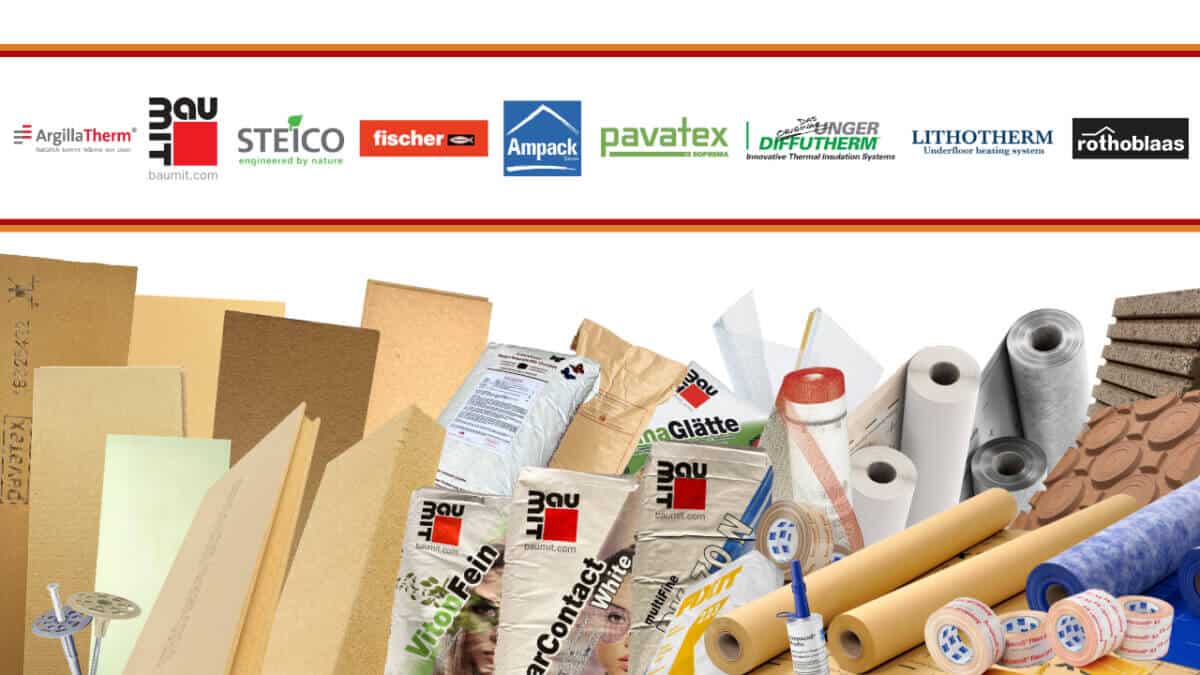SPECIFICATION GENERATOR
Find out which low impact materials are right for your building project.
How we choose our product range
As an independent, brand agnostic supplier with a lot of hands on construction experience, we like to choose what is available from a wide range of suppliers to get the best products available, not just the ones from any particular manufacturer we may have links to. But why do we choose the products we choose?

Ultimately, the reason we make product choices is to do with the utility we see in the products available on the market. We’ve spent time looking at the properties of many similar products which show differences in either real life performance, practicality, usability or longevity. With our experience of construction we then assess the differing levels of utility between similar products. Sustainability is always a consideration but in most cases, natural fibre products are just better at what they do than their synthetic counterparts and so the decision is easily made.
Starting with real-life performance, there are plenty of products which, on paper, seem to be great but when it comes to their performance in the real world, they are sadly lacking. For example, very soft insulation that goes between rafters/stud, etc. There are products which have good insulation properties but when they are installed they squash easily and do not spring back to fill the void in which they are installed. Some are difficult to cut accurately and so cutting introduces voids which reduces effectiveness and increases heat and air movement through the structure.
When assessing performance we also look at more than just the what happens during the winter time. Density and thermal mass are very important factors when considering thermal comfort for the summer months in the more heat-wave prone world we now live in. There are often large differences in the summer performance of insulation boards, which may not be apparent when quickly comparing products with a view to winter performance.
Practicality and usability are very important. The products we choose are often being used by trades-people with little or no prior experience and so its important that they are easy to use, utilise skills that are common in modern construction and that the specifications are simple. For example, we have incorporated plasterboard into some of our specifications to avoid the need for more specialist lime plastering skills, opening the specification up to a very much wider range of installers.
Longevity is the property that makes our materials truly sustainable. If products require continuous maintenance or are easily damaged the embodied energy and cost rises considerably, irrespective of how ‘sustainable’ they may initially appear. Whilst some of our product combinations may not seem to be conventionally ‘sustainable’, the longevity that is achieved is what makes them so.
Genuine innovation is also something we look at. We have recently started supplying a couple of insulation products which do not have low embodied energy but are vapour permeable and hygroscopic and can be used in areas and at thicknesses that wood fibre insulation and other natural fibre insulations cannot be used. In this instance it is the energy saving from using these two insulation products that is ultimately beneficial.
Once we’ve chosen materials, we obtain the actual performance data for each one and use our extensive building physics knowledge so that we can accurately model their performance within a specification. It is very important to assess products through this data, not bias or hearsay, so that we can properly asses their function and appropriateness.
We also consider what is practical to transport. Some manufacturers produce great products but in such large formats that they are only suitable for large sites with machinery to move the product directly to the point of application without being touched. This makes it costly to send but also increases the risk of damage in transit which in turn increases waste and decreases reliability within the supply chain.
Cost is always a factor in decision making for our customers and the temptation is always to choose the cheapest option. However, what seems to be the cheapest is rarely the best or most appropriate and sometimes paying a little more for materials can pay huge dividends either on site, in the longer term or just in the finishes achieved.
If you wish to discuss product choices for your project, please contact us for a free consultation.
